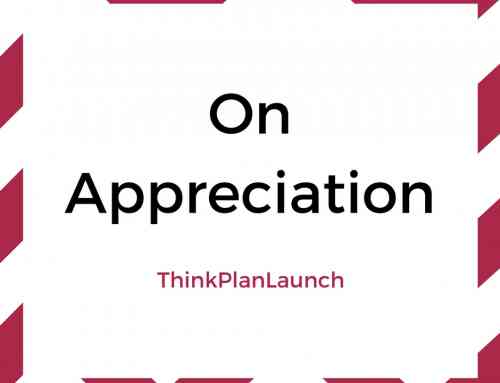You might have heard of a DISC Personality Test or “DISC Profile” before. In this post, we will explain what a DISC assessment actually is – and is not.
Table of Contents
DISC tests do not actually measure personality!
This is the most common misunderstanding with DISC assessments. Many people assume they measure personality, but this is not true.
Rather, DISC assessments measure someone’s unique behavioral style and preferences.
The difference between personality and behavioral style is simple:
Personality is a complete measure of someone’s nature. This includes their cognition, feelings, and self-expression. We often think of someone’s personality playing a part in their sociability, too. The American Psychological Association defines personality as “individual differences in characteristic patterns of thinking, feeling and behaving.”
Behavioral Style is much more specific. It is observable, and it is a measure of how we take action. In a DISC assessment, we specifically measure the following four traits:
- How you respond to problems and challenges.
- How you influence others to your point of view.
- How you respond to the pace of the environment.
- How you respond to rules and procedures set by others.
To be sure, there is some overlap between personality and behavioral style. However, the way we evaluate behavioral style is more specific – and useful.
The four dimensions of a DISC test.
Now let’s take a closer look at the four traits measured in a DISC test:
1. DOMINANCE
Someone who scores high in Dominance tends to be:
- Venturesome
- Competitive
- Determined
- Ambitious
- Strong-Willed
Someone low in Dominance might be described as:
- Cooperative
- Hesitant
- Cautious
- Modest
- Peaceful
As you can see, there are pros and cons to scoring high or low.
Someone who scores high in Dominance tends to be very self-motivated and confident. They take action often, and they will usually get things done on time. The “High-D” is someone who can go to extraordinary lengths to get things accomplished – often where others cannot! This brings to mind entrepreneurs, inventors, and other ambitious miracle workers.
However, there is another side of this coin. When under stress, the high Dominant individual is prone to becoming nervy, aggressive, and demanding. Others may see them as egotistical or arbitrary, and this can affect their relationships.
Now let’s look at someone who scores low in Dominance. This person will be more even-keeled, less on edge, and more agreeable than someone with a higher score. They will probably be easier to get along with and more diplomatic when delivering criticism. They will likely gather more information before rushing headlong into a decision, too. The low Dominant individual can be a great team player and a good friend.
But what’s on the other side of the coin? The Low-D may have trouble making decisions or moving forward with a plan of action. They may avoid confrontation at all costs, even when it is desperately needed to clear the air. They may not stand up for themselves enough, and let others walk all over them in the process. All this can lead to loose ends and decelerated progress towards this individual’s goals.
What does all this mean?
As you can see, there are strengths and weaknesses associated with both extremes – but there are no “right or wrong” scores. Some scores make more sense for certain jobs, however.
Jobs that require frequent decision-making and independent motivation are well-suited to a High-D. These people thrive in a fast-paced and competitive environment. On the other hand, jobs that are more process-oriented and slower moving will likely bore the High-D – but could be a great fit for a Low D or someone with a median score.
Understanding Dominance is also important for purposes of communication. By understanding your score (and that of others), you can tailor your communication towards others in a productive way. For example, if you are communicating with a High-D you should be brief, stick to business, and be well-prepared. When communicating with a known Low-D you would benefit from a more personal approach.
The dominant emotion of the High-D is anger.
2. INFLUENCE
Someone who scores high in Influence tends to be:
- Trusting
- Optimistic
- Persuasive
- Enthusiastic
- Inspiring
Someone low in Influence might be described as:
- Reflective
- Factual
- Skeptical
- Logical
- Suspicious
Once again, there are pros and cons to each extreme.
Someone who scores high in Influence tends to be a great mixer – the life of the party, if you will. They are your talkers and socialites, and we often think of them as being “full of personality!” They are high in optimism and tend to hold a positive view of the world and the people around them. They are the type of people who can put wind back in our sails even when we’re feeling down!
On the flip side, when a “High-I” gets stressed, here’s what tends to happen: they feel stressed, and they want to talk about it – endlessly. They can become glib, unrealistic, and self-promoting. They may become poor listeners, and when optimism turns into over-confidence, they may make unqualified decisions that lead them astray from their goals.
Now let’s look at someone who scores low in Influence. Here’s a person who isn’t quite as animated or talkative, even though they may still be good with people. Their communication style is likely more reserved, and they will place more care in important decisions. They are not so persuasive as their High-I counterparts, but their ability to find the facts and utilize information is impressive. The Low-I can be an excellent editor, researcher, attorney, accountant, and much more.
What’s on the flip side? The Low-I may struggle to stay optimistic, succumbing to skepticism that eventually turns into pessimism. They may also be under-confident, and due to the lack of belief in themselves, they may not take action. Their focus on facts and logic could drive a wedge between them and other people, making it tough to form meaningful relationships or engage in interesting conversation. This can in turn affect someone’s ability to form business relationships or lead and influence others.
What does all this mean?
Once again, with Influence there are no “right or wrong” scores.
Jobs that require lots of people contacts are well-suited to a High-I. Whether it’s sales, public relations, event coordination, or management, the High-I can stay optimistic and resilient when others cannot – and they’ll make a lot of friends in the process. Just don’t leave them alone, or they will wither. They need frequent communication and contact with others to stay motivated and upbeat, much like plants need water and soil.
Understanding Influence is also important for communication. By understanding your level of Influence, and that of others, you can tailor your communication style to be more effective. For example, if you are communicating with a High-I you should be warm and friendly. You should refrain from digging too deep into details, and ask them “feeling” questions to draw out their opinions. When communicating with a Low-I you’ll do better by sticking to facts and business. You should also avoid using language that might be perceived as “overselling” with the Low-I – it will be perceived as inauthentic.
The dominant emotion of the High-I is optimism.
3. STEADINESS
Someone who scores high in Steadiness tends to be:
- Stable
- Consistent
- Predictable
- Patient
- Relaxed
Someone low in Steadiness might be described as:
- Active
- Restless
- Impatient
- Eager
- Flexible
Let’s examine the pros and cons for each extreme:
Someone who scores high in Steadiness is the “glue that holds everything, and everyone together.” They are the friend, family member, or co-worker who goes out of their way to keep the peace, defuse tension, and maintain balance and harmony in their environment. They don’t move at a fast pace, but they will win the race through patient and consistent execution (think: they are the “tortoise” in the race between the tortoise and the hare). Day after day, they will show up and plug away until it’s time to go home, and you can trust them on this.
On the flip side, when a “High-S” gets stressed, they tend to “shut down” emotionally. They still feel plenty of emotions inside, but they are nowhere to be seen on the outside! Their non-demonstrative nature can lead others to believe they are not affected by significant, emotional events. The High-S may also become stubborn, inflexible, and even insensitive under high stress. These traits can lead to ineffective (or absent) communication, and a lack of resolution to important issues needing to be addressed.
Now let’s look at someone who scores low in Steadiness. Simply put, this person is active, restless, and mobile! This can lead them to discover new ways of doing things (since they rarely stick to the same methods), innovate, and create. They tend to think outside the box and have a strong, flexible drive to continue moving forward. When a Low-S is also a High-D, watch out! They are moving fast and without restraint, which can be incredibly amazing to witness – but you might get steamrolled if you’re not careful!
What’s the other side of the coin? The Low-S is a person who is all over the place – in the physical realm, as well as in their own minds! Whereas the High-S is known to be consistent and predictable, the Low-S is not as constrained by process or procedure, so their planning and organizational skills may be lacking. If they do use a process for organization, it may be hard for them to consistently stick to it and follow through. Getting into a routine and forming new habits can be a big struggle for them.
What does all this mean?
As usual there are no “right or wrong” scores for Steadiness.
Jobs that are process-oriented are a great match for the High-S. Since the High-S is also something of a people person (albeit not in quite the same way as the High-I), they do well on teams – both as leaders and as supporters. They relate well to others and can provide a sense of structure for the group. The High-S doesn’t like change and will tend to stay in their job for a long time. This makes them great candidates for positions where longevity is a crucial factor.
Understanding Steadiness is important for communication, too. When you’re dealing with a High-S, make sure you break the ice and remain friendly, and somewhat calm in your delivery. Being abrasive or overly direct could stifle the conversation. With a Low-S, though, you’ll probably want to keep up the pace because they’re impatient – and may not want to waste time with small talk.
The dominant emotion of the High-S is non-emotion.
4. COMPLIANCE
Someone who scores high in Compliance tends to be:
- Diplomatic
- Open-Minded
- Accurate
- Systematic
- Careful
Someone low in Steadiness might be described as:
- Firm
- Independent
- Self-Willed
- Unsystematic
- Arbitrary
Now let’s examine the pros and cons for each extreme:
Someone who scores high in Compliance is responsible and has high standards – for themselves and others. They think things through, consider the details, and place a high focus on quality over quantity. They will keep their desks and living spaces clean and organized (usually), and take pride in their work. They are good at following established procedures and protocol, and tend to be very accurate in their calculations.
When a “High-C” gets stressed, they can become pessimistic, picky, or fussy. At the extremes, they are absolute perfectionists and can be quite strict. This comes from holding high standard for themselves and others, which can be seen as a positive trait. However, the need to be perfect can drive others crazy – and even the High-C themselves sometimes! Hard to please, working for a High-C is sometimes tough – their natural tendency to find fault can hinder motivation if they’re not careful.
Now let’s examine a person who scores low in Compliance. The Low-C is uninhibited and independent. They may tend to break or bend the rules a little bit if they don’t fit the situation – which can be a good thing in situations requiring creativity or innovation. Not hung up on procedures and rules, they are free to evaluate each situation uniquely as it comes along. The Low-C will push forward with a project while others stall and delay due to uncertainties.
What’s the other side of the coin? The Low-C can be careless with details and therefore make accidental errors. They may find it hard to follow basic rules or procedures at work, questioning their validity or meaning. Opinionated and somewhat stubborn by their nature, the Low-C may be a pleasant enough person – and mean well – but find it tough to stay within the necessary boundaries to advance socially and in their career.
What does all this mean?
There are no “right or wrong” scores for Compliance.
Jobs that are technical are a great match for the High-C. These are your engineers, computer programmers, accountants, and mathematicians – but you will find them in other roles, too. They will work long, hard hours and do quality work regardless of the position they hold. Because they take great pride in what they do, they can be trusted to put forth their best effort every time. They can become frustrated, however, if working with others who do not hold themselves to the same standards.
Understanding Compliance is important for communication. When you’re dealing with a High-C, be factual and accurate. Stick to business and stay on task, and try not to oversell your ideas or communicate in a haphazard way. There is nothing that will turn off the High-C more than insincere communication. With a Low-C, you will do well by warming up your tone and drawing out their opinions.
The dominant emotion of the High-C is fear.
Putting it all together.
There are very few of us who are “pure” in one style. Most of us are a unique combination of all four factors, with a majority of our energy in one or two areas – and sometimes three. Our Talent Insights DISC and Motivators test measures your behaviors with incredible accuracy.
The High-C will appreciate the effort that has gone into making our Talent Insights assessment so exacting – it produces nearly 300 unique report results, and the data has been rigorously analyzed and validated by unbiased, third-party firms over the course of three decades.
In fact, our assessment is so widely trusted that over 100,000 companies around the world have used it more than 26 million times. By contrast, the popular assessment called Myers-Briggs only produces 16 possible report results, and has far fewer applications in the workplace or in coaching for communications.
If you’re interested in finding out your behavioral style, let us know! Understanding your unique graph – and that of others – will catalyze greater productivity and more rewarding communications in your life.








Someone please categorize me am I an I if I had 38% I d/s-28% each and c-10% please? I want the title for my numbers not just I high or s high but the creator or whatever those types please?
Hi Gwen, my apologies for the late reply – but if you would like to purchase one of our assessments, please feel free to let us know and we can help set this up for you.
Hi there! My husband has been asked to come up with a self-analytical material to be used during the annual staff workshop in his company next month. Hence, I just couldn’t thank you enough for giving such detailed explanation about the DISC test and how we can use it as a guidance to improve our workplace behavior. I’ll ask him to keep this information in mind so he’ll be able to provide some precious insights about professionalism among his colleagues later.